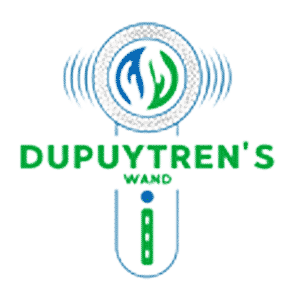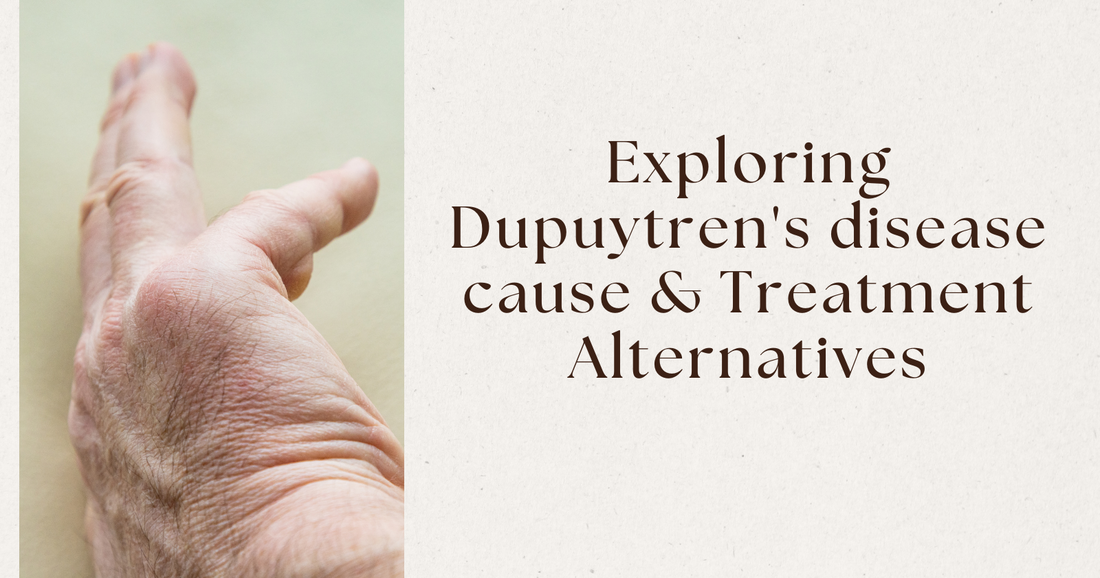Doctors and researchers use the term Dupuytren’s disease interchangeably with Dupuytren’s contracture, a medical condition that affects the palmar fascia, the fibrous tissue between the skin and the palm. This condition causes fingers to curl towards the palms, making daily tasks difficult. While the exact cause of Dupuytren’s disease remains undetermined, some scientists suggest that it may arise from various factors, alongside several other factors.
This blog talks about Treatment Alternatives for Dupuytren’s Contracture
Let’s first consider factors causing dupuytren’s disease
Genetics and Ancestry
Genetics correlates significantly with Dupuytren’s disease. This illness often manifests within families, making it more likely to develop in individuals of Northern European or Scandinavian descent. This genetic susceptibility points to a hereditary character of the case, which makes it more common among some populations.
Gender Disparity
Men to a greater extent develop Dupuytren’s disease than other genders. Biological men are more susceptible to developing this condition, indicating gender’s role in its manifestation. However, the underlying causes of this gender difference remain unclear due to limited information about the disease.
Age and Health Conditions
Besides old age, another important dupuytren’s disease cause is the patient’s age. Whenever a person starts to age, the occurrence of this disease becomes more and more frequent. Conditions such as diabetes and seizure disorders associate with the progression of Dupuytren’s disease. Additionally, factors like alcohol and tobacco use may contribute to the onset or progression of the disease, beyond just physical health concerns.
Symptoms and Diagnosis
Dupuytren’s contracture mostly runs slowly over time, and the typical symptoms of the disease are knots, cords, and contractures in the fingers. Patients could encounter problems with straightening their fingers. Therefore, the activities of their daily living may be hampered. A doctor’s physical examination entails studying the location and severity of nodules and cords, finger movement, and range of motion, as well as evaluating the remaining hand function.
Treatment Options
While there’s no cure for Dupuytren’s disease, various methods can manage its symptoms. These include steroid and enzyme injections, needle aponeurotomy, radiation therapy, and surgery for advanced cases. Each aims to alleviate symptoms and improve hand function, providing relief to patients.
Risk factors for developing dupuytren’s disease
Having a clear knowledge of the source of Dupuytren’s disease will ensue inappropriate treatment and management of it. Acknowledging the significance of genetic, gender, and age factors in this condition’s development, healthcare professionals can tailor interventions to better meet patient needs. Continuing research and discoveries in treatment systems will benefit patients by providing them with better outcomes and quality of life.
The risk factors for dupuytren’s disease cause include:
Age: Dupuytren contracture, unfortunately, can affect people over 50.
Gender: Men are more likely to be affected by Dupuytren’s disease than women, and the symptoms may worsen and progress more rapidly in males.
Ancestry: Individuals of Northern European descent are 1.3-fold more likely to have Dupuytren’s disease that the others.
Family History: The history of heredity in the family typically accompanies Dupuytren contracture, attributing the disease to genetic predisposition.
Occupation: Some researchers have discovered an association between the symptoms of this disease and workers who wear vibrating tools.
Diabetes: The progression from diabetes to Dupuytren’s disease becomes more riskier.
Tobacco and Alcohol Use: Smoking tobacco and drinking alcohol are believed to be related with an increased risk of getting Dupuytren’s problem.
These risk factors significantly influence the onset and worsening of Dupuytren’s Disease, emphasizing the importance of awareness for effective management and treatment.
Non-surgical treatment options for dupuytren’s disease
Non-surgical treatment options for Dupuytren’s disease include:
- Steroid Injections: Oral anti-inflammatory medications, especially those injected into the Dupuytren’s nodule, can reduce its size in the early stages. While they offer short-term relief and may need repeated injections, they can also slow disease progression, providing time for a potential cure.
- Enzyme Injections: Xiaflex, a combination of enzymes, is administered into the affected area by injection to get rid of the hard tissue by softening it. So that the doctor may stretch and straighten the finger better, the pressure helps with the relaxation of the tissue. This remedy is administered in a physician’s office and can be used as a substitute for an operation. The medical practitioner will additionally advise you on stretching exercises after the injections.
- Radiation Therapy: Low-energy radiation therapy may be the approach that alleviates the symptoms and stops the progression of cord nodules and skin changes that can be part of Dupuytren’s contractures. However, evidence to prove the effectiveness of these methods for Dupuytren’s is little.
- Splinting: This therapy, hitherto, has been unsuccessful in the treatment of Dupuytren’s disease.
- Vitamin E Cream: Meanwhile, the therapy has not been a manifestation of success in the treatment of Dupuytren’s disease.
- Ultrasound: This treatment has also not worked for Dupuytren’s disease as well.
A less invasive treatment for Dupuytren’s contracture involves injecting an enzyme to dissolve thickened palmar cords and fascia, enabling finger straightening. This operation is a minimally invasive method which helps to have a shorter recovery than open surgery.
The Bottom Line
Now we got to know about Dupuytren’s disease cause. It’s time to seek the best treatment for the same. The Dupuytren’s Wand and Tape are also employed as a non-surgical treatment for Dupuytren’s disease. It renders a comfortable and continuous finger flexion causing slight tension. This is crucial for the gradual restoration of the joint’s range of motion. Using the Dupuytren’s Wand and Tape can often alleviate tightness and tenderness, potentially delaying the need for surgery.
One advantage is its ease of use at home and lower cost compared to visiting a doctor. Non-surgical treatments for Dupuytren’s disease include steroid injections, enzyme injections, radiation therapy, and the use of Dupuytren’s Wand and Tape. Each option has its pros and cons, and the ideal treatment plan varies based on individual needs and disease severity.

